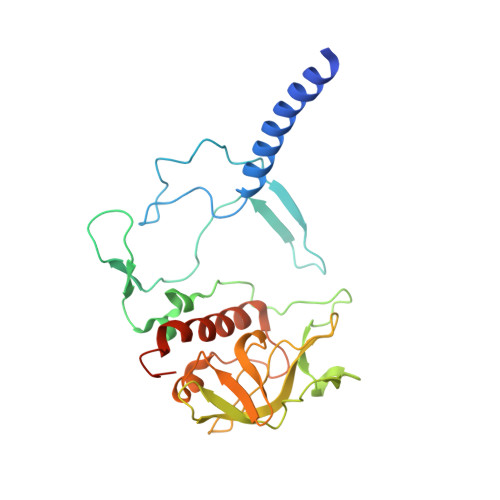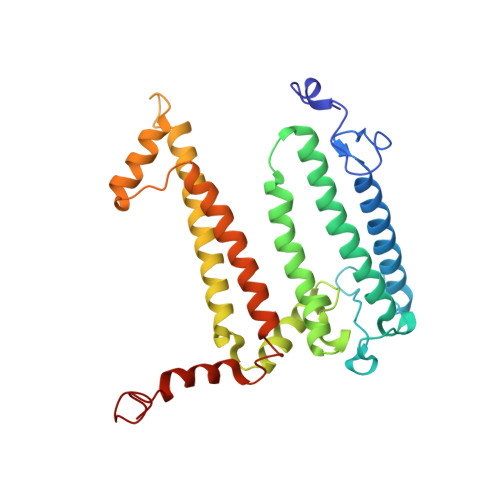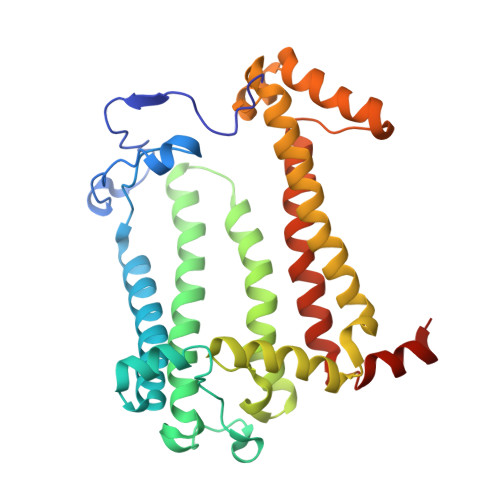Structural and Spectroscopic Consequences of Hexa-Coordination of a Bacteriochlorophyll Cofactor in the Rhodobacter Sphaeroides Reaction Centre
Frolov, D., Marsh, M., Crouch, L.I., Fyfe, P.K., Robert, B., van Grondelle, R., Hadfield, A.T., Jones, M.R.(2010) Biochemistry 49: 1882
- PubMed: 20112981
- DOI: https://doi.org/10.1021/bi901922t
- Primary Citation of Related Structures:
2WX5 - PubMed Abstract:
The structural and functional consequences of changing the coordination state of one of the bacteriochlorophyll (BChl) cofactors in the purple bacterial reaction center have been explored. A combination of steady state spectroscopy and X-ray crystallography was used to demonstrate that mutagenesis of residue 181 of the L-polypeptide from Phe to Arg (FL181R) causes the BChl at the accessory (B(B)) position on the so-called inactive cofactor branch to become hexacoordinated, with no significant changes to the structure of the surrounding protein. This change was accompanied by the appearance of a distinctive absorbance band at 631 nm in the room-temperature absorbance spectrum. The ligand donor was not the Arg side chain but rather an intervening water molecule, and contrary to expectations, the Mg of B(B) did not adopt a more in-plane geometry in response to hexacoordination. The mutation caused a disturbance to the detailed conformation of the BChl macrocycle that manifested in a number of subtle changes to the resonance Raman spectrum. Hexacoordination of B(B) produced a small increase in the lifetime of the excited electronic state of the primary donor bacteriochlorophylls (P*), indicating some disturbance to light-driven energy and/or electron transfer events on the time scale of a few picoseconds after light excitation. The B(B) bacteriochlorophyll returned to a pentacoordinated state in a double mutant where the FL181R mutation was combined with removal of the native axial ligand through mutation of His M182 to Leu. Experimental evidence of hexacoordinated bacteriochlorophylls in the literature on antenna proteins is considered, and possible reasons why hexacoordinated bacteriochlorophylls and chlorophylls appear to be avoided in photosynthetic proteins are discussed.
Organizational Affiliation:
Department of Physics and Astronomy, Free University of Amsterdam, De Boelelaan 1081, 1081 HV Amsterdam, The Netherlands.


























